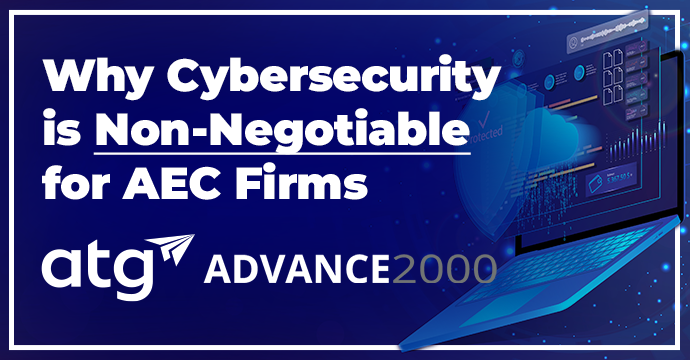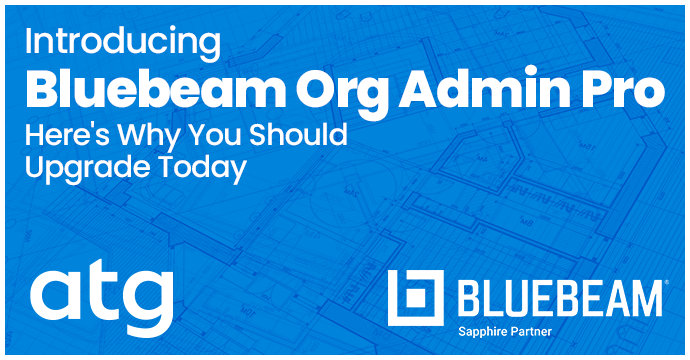
Protecting your intellectual property – designs, projects, construction documents, files, etc. – is extremely important for any AEC firm, especially with real-time collaboration and cloud storage becoming the norm. While these advancements are a game-changer for the industry, they also come with risks. Cyber threats, hackers, and ransomware attacks are just some of the concerns that businesses face, making the responsibility to protect your firm’s data crucial.
That’s where cybersecurity comes in. But where do you even start?
Let’s explore additional benefits of cybersecurity, why it’s essential in the AEC space, and how to approach building a plan for your business.
Benefits of Cybersecurity
Performing a cybersecurity assessment will not only allow you to detect hidden weaknesses and prioritize threats, but also help you stay compliant with industry standards, reduce risk of attacks, and strengthen your overall cybersecurity.
Find hidden weaknesses
The earlier security vulnerabilities are detected, the better chance you have of tackling them before they become major concerns.
Prioritize threats
Identify security gaps and determine the level of risk so you can focus on addressing urgent issues first.
Stay compliant
Identify concerns and ensure compliance with cybersecurity regulations, avoiding potential fines, legal issues, and reputational damage.
Reduce risk
The rise of digital work means a higher risk of ransomware attacks. Avoid exploitation by closing security gaps before they’re breached.
Strengthen overall cybersecurity
Regular attention to your cybersecurity makes it harder for hackers to succeed, reducing the likelihood of being targeted.
Cybersecurity + AEC
The AEC industry’s increasing adoption of digital technologies has transformed project workflows, but it’s also created an array of cybersecurity vulnerabilities. It’s not just about protecting files; it’s about safeguarding the entire project lifecycle.
From design and planning to construction and facilities management, collaboration across the project lifecycle is essential, however, that transfer of data makes it at risk of being compromised without proper security in place.
Cybersecurity + Government
For AEC firms that work on government projects, cybersecurity isn’t just a best practice — it’s often a legal requirement. Many government contracts, like those involving sensitive infrastructure or national security, mandate specific cybersecurity frameworks. These might include:
- CMMC (Cybersecurity Maturity Model Certification): A certification program designed to protect sensitive unclassified information within the Defense Industrial Base.
- NIST Cybersecurity Framework: Provides a comprehensive set of standards, guidelines, and best practices to manage cybersecurity-related risk.
- State and Local Regulations: Many states and municipalities have their own cybersecurity requirements for contractors.
Failure to comply with these regulations can lead to contract termination, fines, and even legal action. Therefore, understanding and implementing the necessary cybersecurity measures is crucial for AEC firms seeking to work with government agencies.
Getting Started with Cybersecurity
Conduct a Risk Assessment
We offer Cybersecurity Risk Assessments through our IT partner Advance2000. This assessment scans your network, devices, and systems for vulnerabilities before they can be exploited. You receive a report with clear insights and actionable steps to strengthen your security.
Invest in Security Technologies
For the AEC industry, collaboration and file sharing are essential. With Advance2000’s Private Cloud BIM platform, AEC firms can greatly reduce downtime from IT issues and access shared project files with the performance and ease of working locally.
Provide Employee Training
Employees are often the first line of defense against cyber threats. Cybersecurity training empowers employees to recognize and respond to threats before they cause harm. Phishing campaigns are also useful in helping employees identify threats and take action.
Develop a Cybersecurity Policy
Create clear guidelines for employees: Outline acceptable use of company devices, password management, data handling, and incident reporting.
Building a robust cybersecurity plan is essential for any business – Contact ATG today to start fortifying your defenses!
Sources
- Advance2000: Cybersecurity Training and Phishing Campaigns for Employees
- Advance2000: Cybersecurity Vulnerability Scan with Advance2000
- Advance2000: AEC – Advance2000
- Department of Defense: Cybersecurity Maturity Model Certification


